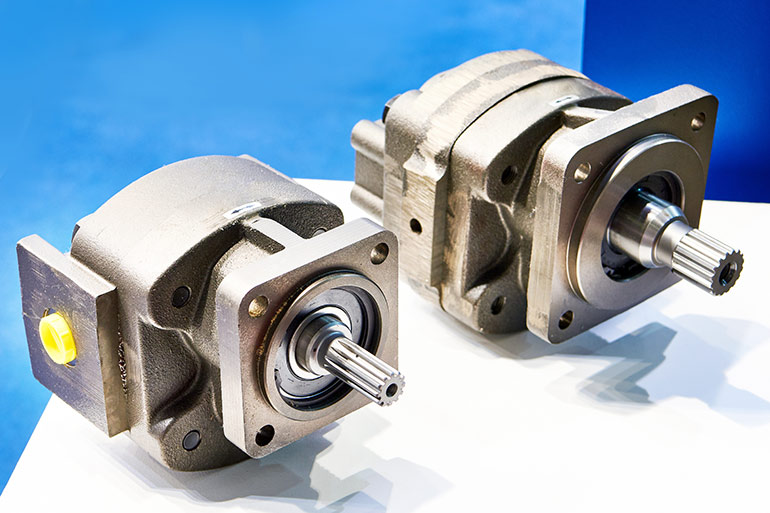By Josh Cosford, Contributing Editor
Oversizing your hydraulic pump is a relatively common error by beginner fluid power professionals or, more likely, entirely untrained individuals tasked with maintaining machinery. Everyone wears many hats these days, so don’t take it personally if you’ve inherited a role that requires skills above your pay grade.

More than once in my career, I’ve seen examples where mechanics or fleet operators wanted to increase the force of an actuator by upsizing their hydraulic pumps. One example resulted in a pump selected over twice the displacement of the original. The primary complaint of the mechanic was that any time he pulled the valve’s lever more than a hair, it stalled the gas engine prime mover.
Therein lies your first clue to an oversized pump, which is an easily stalled engine or electric motor. The stalling problem is primarily a fixed displacement pump issue or at least an obvious symptom at machine startup. A fixed displacement pump provides flow based on its displacement and prime mover speed (rpm), whether you like it or not. So long as no valves are actuated, and pump flow simply diverts to tank, you might not notice the excess flow unless it’s exponentially high enough to create massive backpressure.
But once you attempt to move any significant load, the usual work pressure combined with increased flow draws horsepower too great for the now-undersized prime mover. An electric motor will blow a breaker if you’re lucky and start a fire if you’re not. Or otherwise, your internal combustion engine will sputter and stall.
Any prime mover is rated for a given horsepower by the manufacturer yet only capable of that horsepower-ish. I won’t bore you with SAE horsepower rating standards, but know that manufacturers previously lied so much about their horsepower ratings that some no longer publish figures. Electric motors at least display efficiency figures so you can calculate how much power you have to work with, but also know that an electric motor horsepower rating is a gross number.
Nevertheless, say you have 10 net hp to work with; each one of those horses will produce the factors of pressure and flow divided by 1714. If your relief valve is set to 3,000 psi, you will be left with 5.7 possible gpm for your pump. Notice I said, “for the pump,” but not actual flow. Like with prime movers, the pump has an efficiency that reduces effective flow, so you can expect only 4.5 to 5.1 gpm after friction and clearances rob you of power. In case you’re wording, the math looks like this: psi x gpm / 1714 = hydraulic hp.
Now that we agree that horsepower is a limited resource given your electric or gas/diesel motor, just running the numbers shows how easily you can overwhelm the prime mover. My original example with the double displacement pump kicking out a theoretical 11.4 gpm asks for 20 net hp.
What if, for some reason, your prime mover is vastly oversized and easily bears the brunt? Then, can you tell if your pump is oversized? If your log splitter starts firing timber into the side of your pickup, then that clear example of velocity is a clear sign that your pump is oversized.
Filed Under: Components Oil Coolers, Engineering Basics, Mobile Hydraulic Tips, Pumps & Motors, Technologies